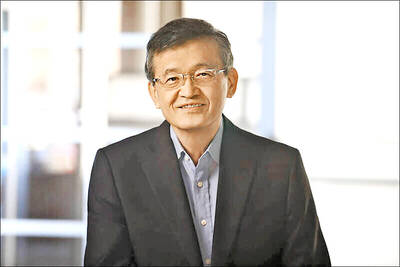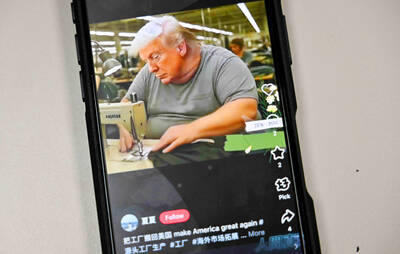Low interest rates and favorable tax environments are stoking the fires of takeovers, with about a quarter of big groups now on the lookout for targets in the next 12 months, a study found last week.
“Plans for transformational acquisitions are accelerating,” the survey by consultancy Ernst and Young (EY) concluded.
The pharmaceutical sector has led the way so far this year with deals worth US$150 billion, according to consultancy Dealogic, and that does not include a failed bid worth US$117 billion by US firm Pfizer for British-Swedish group AstraZeneca.
On Friday, a bid worth US$46 billion by US drugs laboratory AbbVie was rejected by Shire Pharmaceuticals, which is listed in London and New York, but based in Dublin.
On Wednesday, US group Valeant launched a hostile bid of US$53.5 billion for Allergan.
Much of this is driven by a need to grow and cut costs to counter the expiration of some patents on high-earning drugs, analysts say.
The survey assessment by EY backs up comments from analysts for some time that ultra-low interest rates by several leading central banks are one of the main factors reigniting interest in takeovers.
Other forces are at work as well: During the financial crisis that began in 2008 and the subsequent eurozone debt crisis, many big companies restructured their businesses and hoarded cash. They did not have sufficient confidence in the outlook to invest, even by borrowing cheap money being pushed at the banking system by some central banks.
However, now many businesses are gaining confidence in the recovery and are looking to expand by buying other businesses, which can offer a faster route to growth than setting up new operations, and may be less risky.
EY interviewed 1,600 executives in companies in 54 countries. It found that the number of big groups willing to launch takeovers of than US$500 million had doubled in 12 months to 27 percent of the total. Those willing to do deals of more than US$1 billion had doubled to 12 percent.
Their willingness to take on debt to finance deals was the highest for five years.
Many companies are under pressure from aggressive shareholders to cut costs, which could make company boards highly selective in looking at targets.
“After a prolonged financial crisis and merger-and-acquisition [M&A] market malaise, companies and boards are opting for quality rather than quantity,” said the head of M&A activity in France for EY, Rudy Cohen Scali.
Recently US and European companies have led M&A activity, but emerging companies could begin to play a significant role, led by China and India, the report said.
“The top five investment destinations balance emerging markets such as India and China with a continued focus on mature markets such as the US, UK and Germany,” it found.
The EY report said that “30 percent of executives perceive global political instability to be the greatest economic risk.”
Henderson Global Investors’ data last month showed that in the first quarter of the year, big companies had raised dividend payouts to shareholders by nearly a third.
With the crises fading, and despite sluggish growth “all over the markets there is liquidity waiting to be used,” Paris-based Barclays Bourse portfolio manager Renaud Murail said then.
“American companies have accumulated huge warchests,” he said.
At investment group Amundi, global head of equities Romain Boscher said at the time: “The wave of mergers and acquisitions is just beginning.”
Cohen Scali said in the EY report: “The fundamentals for high-value deal-making are very favorable... However, the complexity of the challenge facing executives today means M&A is more measured.”
Michael Hewson, chief market analyst at CMC Markets UK, contested suggestions that the upsurge of M&A activity reflects renewed confidence in some parts of the global economy, saying that one driving factor was a search by US companies to use their piles of cash abroad in a way which would not attract tax if the money were sent to headquarters in the US.
Pfizer’s failed attempt to acquire AstraZeneca “was the most high-profile attempt” to use cash, he said.
With many stock markets close to record highs, boardrooms were considering buying back shares, or returning reserves to shareholders — citing Rolls-Royce this week as the latest example of this.
Attempts by US group General Electric to buy a large part of French engineering group Alstom could also be motivated in part by the fact that it had US$57 billion outside the US at the end of last year, he said.
This raised questions about “the value and reasons behind these deals,” Hewson said.

Intel Corp chief executive officer Lip-Bu Tan (陳立武) is expected to meet with Taiwanese suppliers next month in conjunction with the opening of the Computex Taipei trade show, supply chain sources said on Monday. The visit, the first for Tan to Taiwan since assuming his new post last month, would be aimed at enhancing Intel’s ties with suppliers in Taiwan as he attempts to help turn around the struggling US chipmaker, the sources said. Tan is to hold a banquet to celebrate Intel’s 40-year presence in Taiwan before Computex opens on May 20 and invite dozens of Taiwanese suppliers to exchange views

Application-specific integrated circuit designer Faraday Technology Corp (智原) yesterday said that although revenue this quarter would decline 30 percent from last quarter, it retained its full-year forecast of revenue growth of 100 percent. The company attributed the quarterly drop to a slowdown in customers’ production of chips using Faraday’s advanced packaging technology. The company is still confident about its revenue growth this year, given its strong “design-win” — or the projects it won to help customers design their chips, Faraday president Steve Wang (王國雍) told an online earnings conference. “The design-win this year is better than we expected. We believe we will win

Chizuko Kimura has become the first female sushi chef in the world to win a Michelin star, fulfilling a promise she made to her dying husband to continue his legacy. The 54-year-old Japanese chef regained the Michelin star her late husband, Shunei Kimura, won three years ago for their Sushi Shunei restaurant in Paris. For Shunei Kimura, the star was a dream come true. However, the joy was short-lived. He died from cancer just three months later in June 2022. He was 65. The following year, the restaurant in the heart of Montmartre lost its star rating. Chizuko Kimura insisted that the new star is still down

While China’s leaders use their economic and political might to fight US President Donald Trump’s trade war “to the end,” its army of social media soldiers are embarking on a more humorous campaign online. Trump’s tariff blitz has seen Washington and Beijing impose eye-watering duties on imports from the other, fanning a standoff between the economic superpowers that has sparked global recession fears and sent markets into a tailspin. Trump says his policy is a response to years of being “ripped off” by other countries and aims to bring manufacturing to the US, forcing companies to employ US workers. However, China’s online warriors